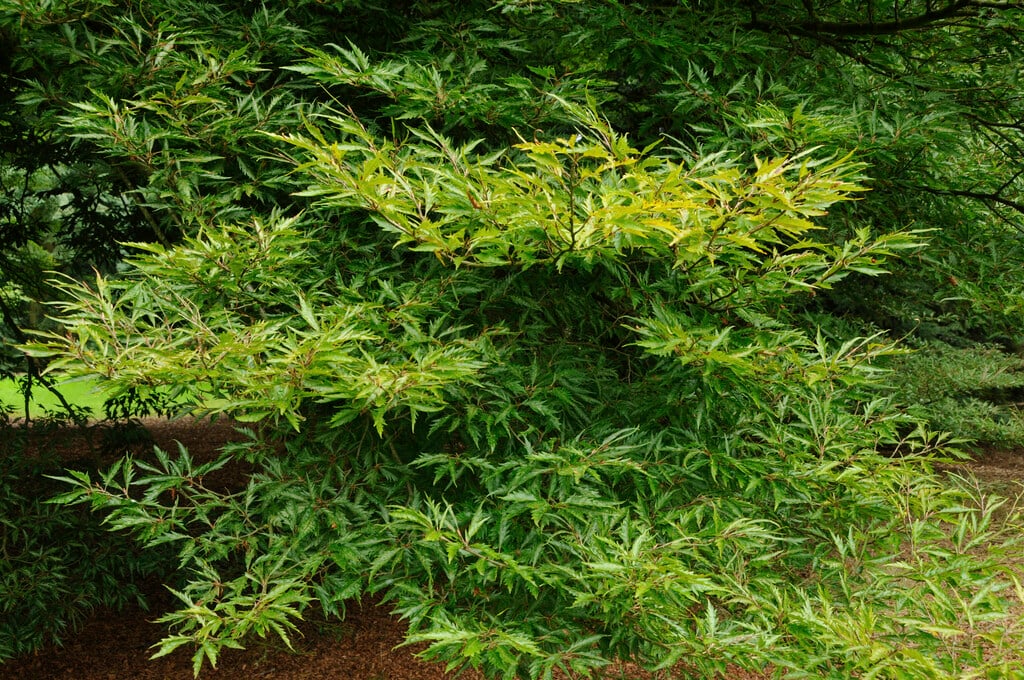Fagus sylvatica var. heterophylla 'Aspleniifolia'
fern-leaved beech
Large, deciduous tree with a broad, open crown. Ferny dark green leaves are variable, mostly long and narrow, cut deeply into several pairs of pointed lobes and turning orange-brown in autumn. Flowers small, green, followed by bristly fruits (nuts)
Size
Ultimate height
Higher than 12 metresTime to ultimate height
20–50 yearsUltimate spread
Wider than 8 metresGrowing conditions
Moisture
Moist but well–drained, Well–drainedpH
Acid, Alkaline, NeutralColour & scent
| Stem | Flower | Foliage | Fruit | |
| Spring | Green White | Green | Green | |
|---|---|---|---|---|
| Summer | Green White | Green | ||
| Autumn | Green White | Red Yellow | Pink | |
| Winter | Green White |
Position
- Full sun
- Partial shade
Aspect
North–facing or South–facing or West–facing or East–facing
Exposure
Exposed or Sheltered Hardiness
H6Botanical details
- Family
- Fagaceae
- Native to GB / Ireland
- No
- Foliage
- Deciduous
- Habit
- Spreading branched
- Potentially harmful
- Pets (dogs): Harmful if eaten. For further information and contact numbers regarding pets, see the HTA guide to potentially harmful plants
- Genus
Fagus are large deciduous trees with smooth grey bark, ovate leaves colouring well in autumn, and inconspicuous flowers followed by usually spiny fruits
- Name status
Accepted
How to grow
Cultivation
Tolerant of a range of soils including chalk, grow in full sun or partial shade. For best colour, position in full sun. For more information see beech cultivation
Propagation
Propagate by grafting
Suggested planting locations and garden types
- Architectural
- Cottage and informal garden
- Wildlife gardens
- Hedging and screens
Pruning
Pests
May be susceptible to aphids and beech bark scale
Diseases
May be susceptible to beech bark disease, fungi (particulary bracket fungi) and powdery mildews. Sometimes susceptible to honey fungus
Get involved
The Royal Horticultural Society is the UK’s leading gardening charity. We aim to enrich everyone’s life through plants, and make the UK a greener and more beautiful place.

